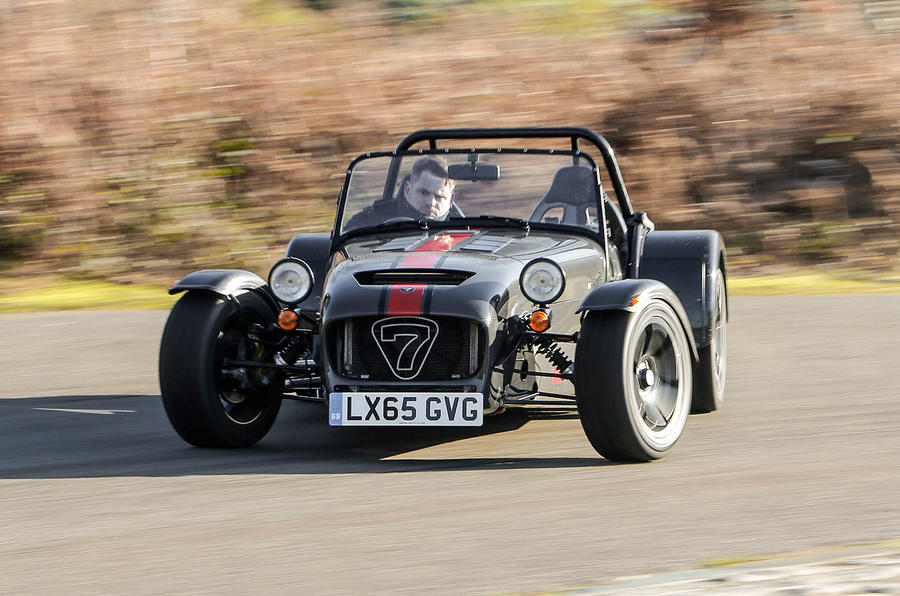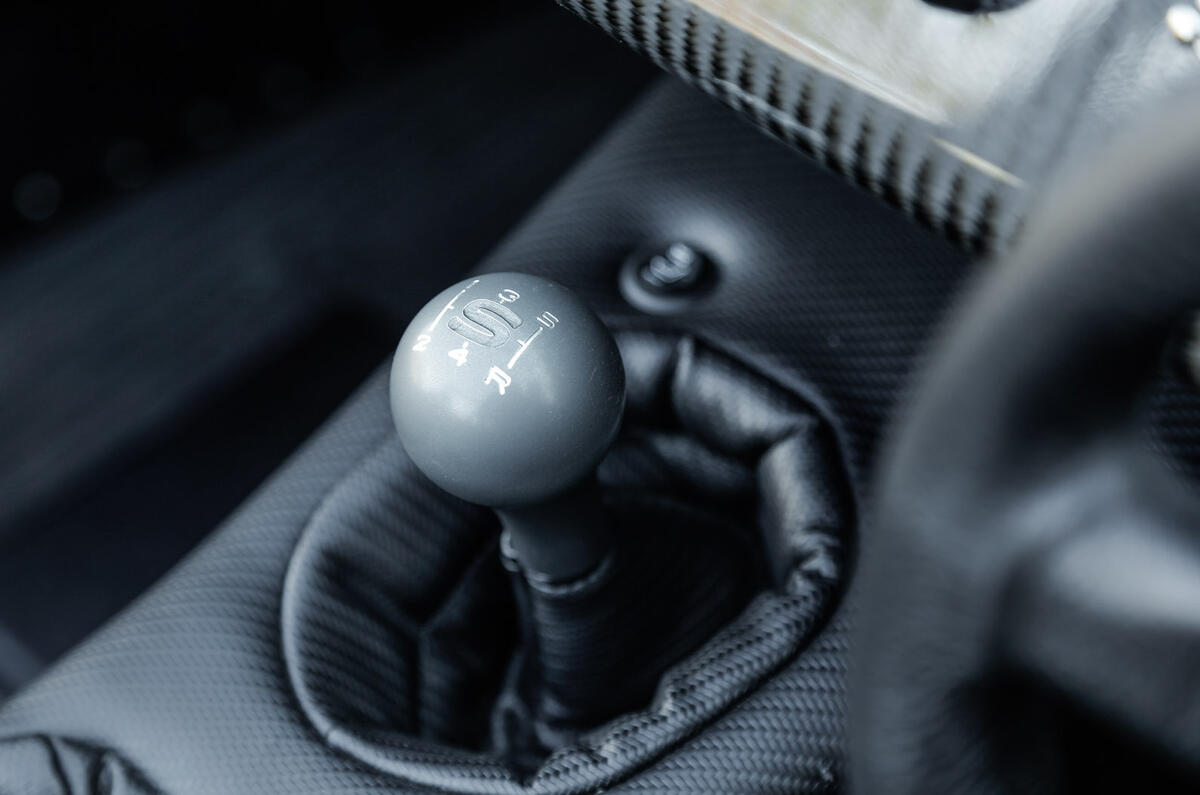What is it?
Remember how last year’s 620R was essentially a road-going version of Caterham’s R600 race car? Well, the 620S is, essentially, the same car, retaining as it does the febrile 310bhp supercharged four-pot, but it now takes the road-going part a bit more seriously.
Hence the R’s uncompromising sequential gearbox has been swapped out for a standard five-speed manual, the suspension components have been taken down a notch (from 'race' level to 'sport') and you get a windscreen. Plus the hood and doors to go with it.
The alterations, not to mention a £5k reduction in starting price, are likely to play well to prospective 620 buyers. Caterham readily concedes that despite the model’s overt relationship with the track, not all its customers are interested in the lap record at Brands. Many simply want the supercar-troubling performance twinned with a Seven’s normal amenability.
'Normal' though, in the 620‘s case, is to be taken advisedly. While the springs and dampers may have changed, you still get the ‘wide track’ front geometry and uprated brakes, plus an adjustable anti-roll bar and limited-slip differential at the back to go with the bespoke rear-exit exhaust system.
Even with the extra weight of bigger, 15in wheels, more kit and the now optional SV chassis, the 620S, at 508bhp per tonne, remains a decidedly senior option.
What's it like?
I enjoyed the 620R, but there’s no denying that, away from a circuit, it was all a bit much. The sequential ’box required the fortitude of Iron Man for it to shift satisfactorily, and the chassis, while very well conceived and tuned, was never the friendliest arrangement with which to spend an afternoon.
After an hour or so of wrist/calf/neck/heart strain, it was easy to put back in the box, making it one of those heavy-duty Caterhams that tends to work better as an anecdote than an actual car.
Not so the 620S, which is magnificent from start to finish. Sit in it and you get the same toggle-strewn carbonfibre dash as the R, except now, of course, you’re shielded from the elements just enough to make progress seem more pleasurable than outright perilous. Caterham's leather seats are now standard, although our test car came with Caterham’s new heated carbon fibre buckets - an expensive tick at £1000, but a brilliant and essential one.
The blown 2.0-litre Ford Duratec remains much as before: hugely noisy, not precisely easy to get off the mark and occasionally grouchy at low speeds - none of which particularly differentiates it from the rest of Caterham’s Blue Oval-sourced engine line-up. Its distinguishing mark, predictably, is the massive pace that comes with it. This was true of the 620R, too, but here the five-speed manual has distilled the colossal shove into something far more wieldy and likeable.
Where the sequential transmission all but vetoed the idea of moving between slow and fast at anything less than a frenzy, the conventional ’box now lets you drive far more languidly. Marrying its longer ratios to 219lb ft and a kerb weight of 610kg gives the car a wonderful length of stride, and with its obliging suspension removing much of the R’s edginess, it's conspicuously easy to drive the 620S at the kind of cross-country pace that normally demands a spot of endeavour from a Seven owner.












































Join the debate
Add your comment
Smoke and shadows
The tranquil pause between